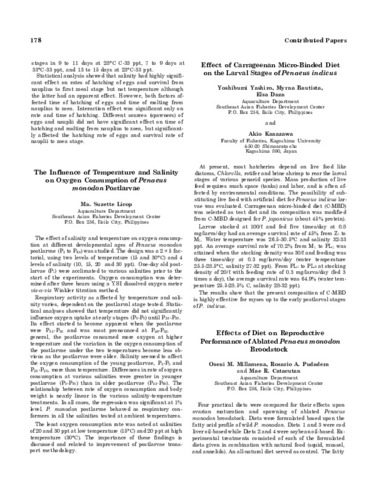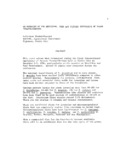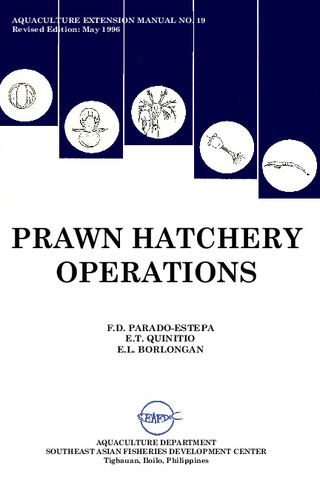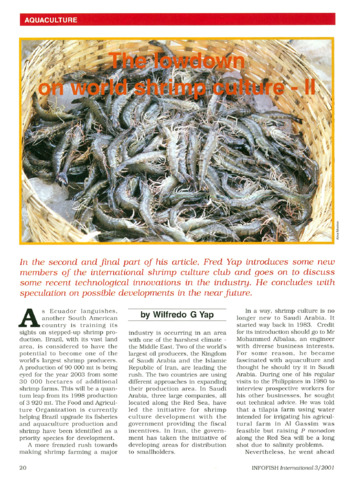Effects of diet on reproductive performance of ablated Penaeus monodon broodstock
Share
Abstract
Four practical diets were compared for their effects upon ovarian maturation and spawning of ablated Penaeus monodon broodstock. Diets were formulated based upon the fatty acid profile of wild P. monodon. Diets 1 and 3 were cod liver oil-based while Diets 2 and 4 were soybean oil-based. Experimental treatments consisted of each of the formulated diets given in combination with natural food (squid, mussel, and annelids). An all-natural diet served as control. The fatty acid composition and total lipid content of the diets and of P. monodon fed with these diets were assessed.
Reproductive performance was evaluated in terms of number of spawnings, fecundity, egg and nauplii production and hatching rate of eggs. Broodstock response was best in Diet 1 and comparable with the control, followed by Diets 3 and 4, and was poorest in Diet 2.
Broodstock performance appeared to be related to the fatty acid pattern of the diet. All pelleted diets contained similar levels of total lipids. However, there were differences in amounts of important polyunsaturated fatty acids (PUFA): 20:4ω6 (arachidonic), 20:5ω3 (eicosapentaenoic) and 22:6ω3 (docosahexaenoic) acids. The fatty acid profiles of Diets 1 and 3 more closely resemble the profile of maturing ovaries of wild P. monodon; the PUFA content of these diets and ω3/ω6 ratios were higher compared to Diets 2 and 4. Diet 2, showing the poorest profile among the diets, was low in ω3/ω6 ratio and contained minimal levels of PUFA.
Description
Abstract only.
Suggested Citation
Millamena, O. M., Pudadera, R. A., & Catacutan, M. R. (1985). Effects of diet on reproductive performance of ablated Penaeus monodon broodstock (Abstract only). In Taki Y., Primavera J.H. and Llobrera J.A. (Eds.). Proceedings of the First International Conference on the Culture of Penaeid Prawns/Shrimps, 4-7 December 1984, Iloilo City, Philippines (pp. 178-179). Iloilo City, Philippines: Aquaculture Department, Southeast Asian Fisheries Development Center.
Subject
Taxonomic term
Related items
Showing items related by title, author, creator and subject.
-
An overview of the nutrition, feed and feeding techniques of prawn penaeid/shrimps
Piedad-Pascual, Felicitas (Philippine Council for Aquatic and Marine Research and Development, 1989)This paper echoes what transpired during the first International Conference of Penaeid Prawns/Shrimps held in Iloilo City in December 4-7, 1984, particularly on the Nutrition nd Feed Development. Around 25 papers were ... -
Prawn hatchery operations
Parado-Estepa, Fe D.; Quinitio, Emilia T.; Borlongan, Emeterio L. (Aquaculture Department, Southeast Asian Fisheries Development Center, 1996-05)The manual, an updated version of the 1984 SEAFDEC/AQD manual, presents the underlying principles and step-by-step instructions of prawn larval and post-larval rearing. The techniques described are not only applicable to ... -
The lowdown on world shrimp culture - II
Yap, Wilfredo G. (INFOFISH, 2001)This paper introduces some new members of the international shrimp culture club and goes on to discuss some recent technological innovations in the industry, particularly the polyculture of tilapia (mainly Oreochromis ...





